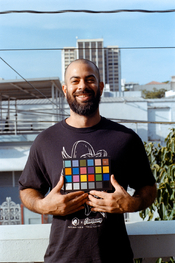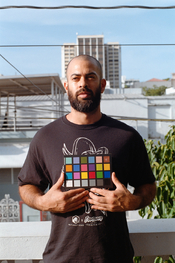I'm back with a bit of an update.
To keep everything organized, the tests I have performed have been with the following 4 variations:
PE formula with RPC rounded amounts and omitting potassium iodide
PE formula with an accidental halving of the sodium sulfite
PE formula with potassium iodide
RPC simplified formula (sodium sulfite, potassium carbonate, KBr and CD-4) adjusted pH down from 10.9 (!) to 10.12 w/ 30% acetic
I have compared these to the "baseline" of factory-made CS developer (which I believe is repackaged Unicolor developer FWIW). I will say up top that these conclusions are based on a NLP conversion workflow. I have come to understand why
@koraks warns against drawing conclusions from this conversion method, but since it is the only reasonable way for me to easily/consistently work with negatives I have to use it as my "real world application" baseline. Each conversion method will yield different results. Also, the manual conversions he was kind enough to work on exhibit similar characteristics. So there's the grain of salt and all that.
My first conclusion is that the CS developer definitely arrives off-spec. It has already experienced a certain amount of oxidization by the time it is mixed, which makes it a less-than-suitable comparison baseline. Alas, my options are limited. Second, the batches I have gotten recently have a far too high of pH upon mixing. 10.38. I contacted CS and they told me (in a strangely non-committal way) that the ideal pH is in fact 10.1. When I told them that their product was repeatedly off this mark they ignored me. Unimportant, but that shows how much they care about quality control. But we're not here to talk about CS or their shortcomings.
My HB variations all have small visible differences in the negatives, but these variances are ultimately smoothed out by the NLP conversion software. YMMV depending on the conversion method you use. The variance between the full-spec recipe and RPC's simplified version is quite visible in the negatives, but in the conversion these differences mostly disappear. Again, this is largely a result of the software interpreting the information, but since I likely won't ever be manually converting images on any large scale I'm just going to give myself over to the void and let the software do its thing. That's to say that in MY workflow the two recipes give almost identical results. I am not optically printing, so I have no information on how they may differ in that respect.
My HB variations all give cleaner results than the CS factory chems. Better color separation, whiter whites, deeper blacks, minimal color cast in shadows, crisper skin tones, more contrast. The variation with the potassium iodide gave me my favorite result, with the simplified RPC version being almost identical. So yes, omitting the iodide is mostly inconsequential.
That being said, the lack of saturation in the reds and greens when compared to the CS chems is noticeble. Greens in the HB just feel duller and slightly less true-to-life. Overall, as I previously mentioned, the HB results are cooler than the CS results. After a week of going back and forth between the images I think this is an overall point in favor of the HB.
I've included two converted images that I consider close to deliverable final products. CS vs HB V4 with iodide. I have made subtle edits purely on the density; no color tweaks besides what the software has already done. Not so much of a "true" comparison as it is an example of the result one can achieve using this HB formula and a similar digital workflow. I
know there are certain color characteristics (such as the slight reddish color cast in the CS example) that are artifacts mostly from the NLP algorithm, while there are others that are inherent. So once again, grain of salt.
If there is interest I can post more comparisons of the negatives or individual scans for others to do their own lo-fi digital conversions. The usefulness of these comparison is limited by my access (lack theorof) to legit flexicolor developer and my stubborn dependence on the NLP software for conversions. I may be getting results identical to flexicolor and simply not know it. The CS developer could very well be the outlier here. So do what you will with this information.
I would like to dive deeper and find an empirical reason for the variations, although I am relatively satisfied with the HB at this point. I will likely try a new HB mix and see if there is a way to punch up the reds/greens. Maybe by raising the pH or adding more CD-4.
Or better yet, I could just convince myself that the higher saturation is objectively a negative characteristic and sail off into the sunset.












